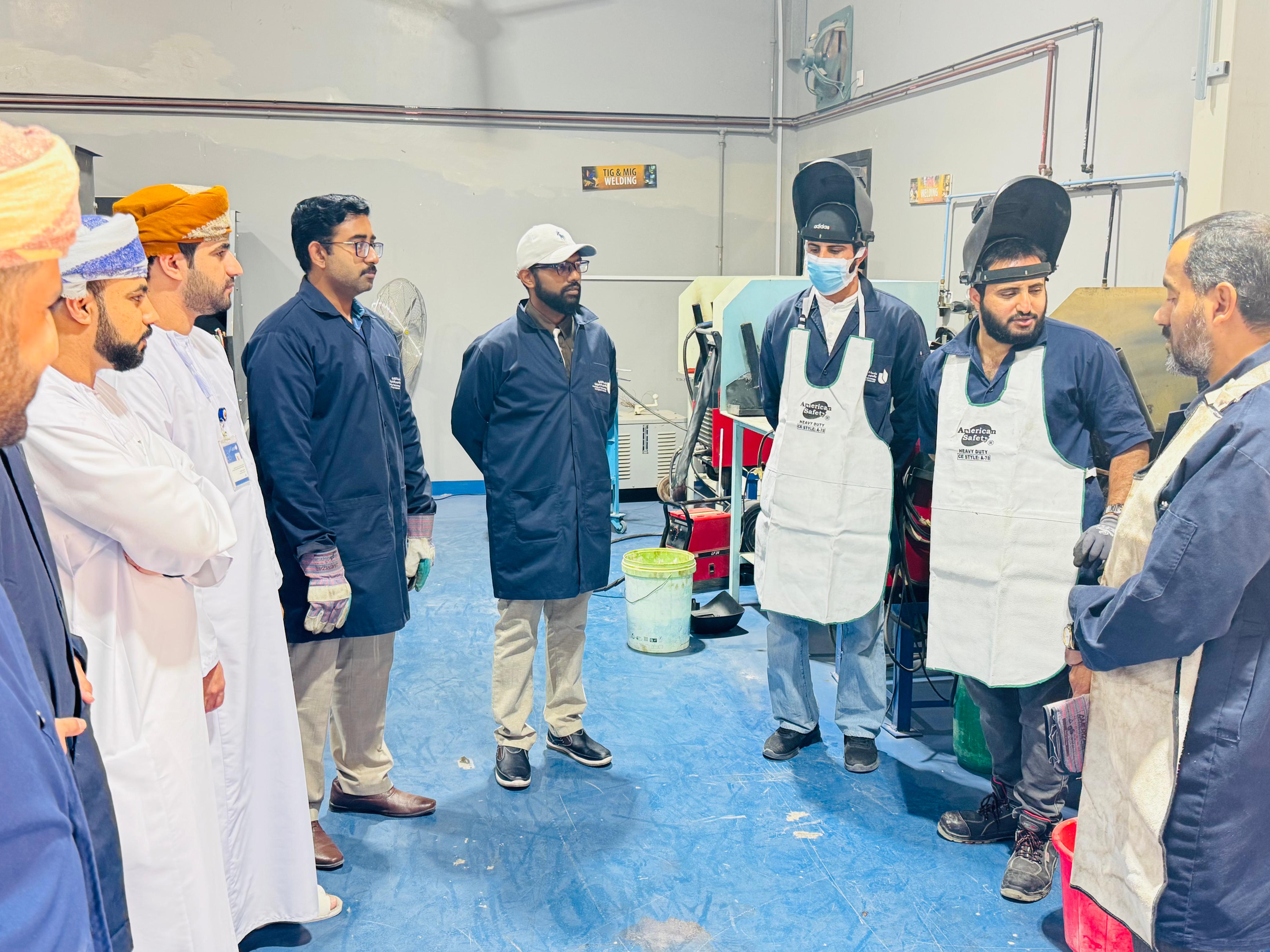Workshop on TIG/MIG Welding

The PDC Team of the Engineering Department at UTAS-Nizwa organised a training session on February 25, 2025, entitled "Workshop on TIG/MIG Welding." Dr. Fakrudeen, the PDC Team Coordinator for the engineering department, gave an inaugural address to start off the session. Mr.Munther Moosa Al Tubi and Mr.Saif Nasser Said Al Rawahi of Engineering Department at UTAS-Nizwa (north campus), facilitated the training session. Dedicated trainers and faculty members of Mechanical Engineering from UTAS-Nizwa attended an enlightening workshop on TIG/MIG Welding.
Welding is a popular manufacturing method that combines heat and filler material to connect materials. While there are other welding processes available, Metal Inert Gas (MIG) welding and Tungsten Inert Gas (TIG) welding are two of the most diverse and exact methods for joining metals. MIG and TIG welding use an inert shielding gas and externally provided filler material to join base metals, but they differ in critical application areas such as workpiece thickness capabilities, weld quality, and operator skill requirements. MIG process starts with the wire electrode and shielding gas being fed through the welding gun or torch. The wire diameter and composition will vary depending on the joint configuration, part thickness, and types of metal being joined. The TIG welding technique also incorporates an arc. However, it uses a non-consumable tungsten electrode and a separate filler material to create the weld. The filler is mostly a rod manually fed into the weld pool. It means both hands are used during this process, one for the tungsten electrode and the other for the filler material. Furthermore, the wire feed speed (WFS) settings determine the pace and the amount of the wire being fed. The workshop gives a hands on training to the trainers and faculty members.
The training program was highly informative and good hands on training to the all participants. .
Writeup by Munther Moosa Al Tubi and Saif Nasser Said Al Rawahi
240